Schneider Shorts of 5 April 2024 – angry old Nobelist hounded again, one German professor whitewashed, another told to find new friends, Iranian student in Finland admits buying authorships, Polish vice-rector brings papermilling home, more retractions for Italian ex-rector, and finally, with an obituary to anti-aging researcher.
Table of Discontent
Science Elites
- A not insignificant number – DFG absolves Ralph Schermuly of his own papers
- 700 euro per article – Iranian student in Finland admits to papermilling
- Participation not advisible – Thomas Müller ordered to stop playing with Tiwari
- Before the current atmosphere of prosecution – Nobelist Thomas Sudhof hounded by Elisabeth Bik
- One funeral at a time – after Judith Campisi’s death, her papers receive a post-mortem
Scholarly Publishing
- Dr. Shaker Qaidi invites you – PLOS One and their amazing editor
Retraction Watchdogging
- Authorship of the paper cannot be relied upon – Paolo Gardoni and Grzegorz Królczyk retract papermilled trash
- An explanation of these concerns – two more retractions for Salvatore Cuzzocrea
Science Elites
A not insignificant number
In October 2021, I published an article about Ralph Schermuly, professor of pulmonology at the University of Giessen in Germany. He has several very problematic papers on PubPeer, some co-authored by his fellow professor in Giessen, Soni Pullamsetti, whose main affiliation is at the Max-Planck Institute for Heart and Lung Research in Bad Nauheim near Frankfurt.
Inspector Schermuly Investigates!
Somebody vandalised the “bed-to-bedside” research of the pulmonology professor Ralph Schermuly. His Giessen University appointed the best investigator they had to solve the case!
Back in 2021, the university Ombudsman invited Schermuly to investigate himself. Eventually, the DFG took over, and now made the final decision, which they sent to me. It is a typical DFG verdict: data was forged but the last author is innocent.
Here is the DFG decision letter which they ordered me to keep confidential or else there may be a lawsuit for infringement of somebody’s privacy. My view is that if you wish your privacy, don’t publish research papers.
We learn that according to DFG guidelines it is never the job of the senior and corresponding author to make sure their papers don’t contain fake data. I will never be told what the Max Planck Society determined for Soni Pullamsetti, but I presume she was found innocent also. Translated excerpts from the DFG letter:
“According to the relevant procedural regulations, the DFG opened already in winter 2021 a preliminary examination due to suspicion of manipulation of representations or illustrations, and heard Mr. Schermuly as well co-authors of the affected publications in writing about the allegations, without disclosing the origin of the information.
The DFG’s preliminary review was temporarily suspended in spring 2022 in accordance with the DFG Rules of Procedure for Dealing with Scientific Misconduct […] when it became known that the same allegations had also been comprehensively investigated by the Max Planck Society and by an investigative commission at the University of Giessen. After these procedures were completed only in spring 2023, the DFG’s preliminary review resumed immediately and continued. […]Taking into account further statements from those affected, the committee came to the conclusion that the criticisms deposited on “Pubpeer” indeed represent objective errors in figures of the publications in a not insignificant number. However, there is an absense of negligence on the part of Mr Schermuly as he did not create the figures in question himself, the errors were difficult for him as the supervising researcher to recognize, and there were no indications that a particularly intensive screen of these images was required. Mr Schermuly therefore did not neglected the diligence that was obvious and almost enforced.
The proceedings were discontinued due to a lack of gross negligence. Based on the information available to us, significant additional measures for quality assurance were implemented In the affected research groups since the allegations became known. In addition, many of the criticisms were meanwhile addressed by Corrigenda.”
DFG and Marburg drop misconduct investigation of Roland Lill papers
German Research Foundation (DFG) terminated the investigation against their Senator and Marburg University professor Roland Lill, after having found no research misconduct. No comments are issued on the integrity of the data in his papers on yeast biochemistry, or on some unusual image manipulations which were already admitted by Lill and his former PhD students…
Not only Corrigenda! This Schermuly paper was retracted, from a set of 3 where he was last and corresponding author:
Mario Boehm , Tatyana Novoyatleva , Baktybek Kojonazarov , Florian Veit , Norbert Weissmann , Hossein A. Ghofrani , Werner Seeger , Ralph T. Schermuly Nitric Oxide Synthase 2 Induction Promotes Right Ventricular Fibrosis American Journal of Respiratory Cell and Molecular Biology (2019) doi: 10.1165/rcmb.2018-0069oc

The September 2022 Retraction mentioned:
“Collectively, these instances of misrepresentation undermine the Journal’s confidence in the integrity of the data reported in the paper. By mutual agreement between the authors and the Journal, the article is retracted.”
Other Schermuly papers were indeed corrected, even the disastrously fake Kolosionek et al 2009. Not all were in need of corrections of course. Not this, for example:
Zahara Ali , Djuro Kosanovic , Ewa Kolosionek , Ralph T. Schermuly, Brian B. Graham , Alistair Mathie , Ghazwan Butrous Enhanced inflammatory cell profiles in schistosomiasis-induced pulmonary vascular remodeling Pulmonary circulation (2017) doi: 10.1086/690687

Obviously, Schermuly got bored with corrections, since he was declared innocent anyway. He is the corresponding author here:
Michaela Lang , Baktybek Kojonazarov , Xia Tian , Anuar Kalymbetov , Norbert Weissmann , Friedrich Grimminger , Axel Kretschmer , Johannes-Peter Stasch , Werner Seeger, Hossein Ardeschir Ghofrani , Ralph Theo Schermuly The soluble guanylate cyclase stimulator riociguat ameliorates pulmonary hypertension induced by hypoxia and SU5416 in rats PLoS ONE (2012) doi: 10.1371/journal.pone.0043433
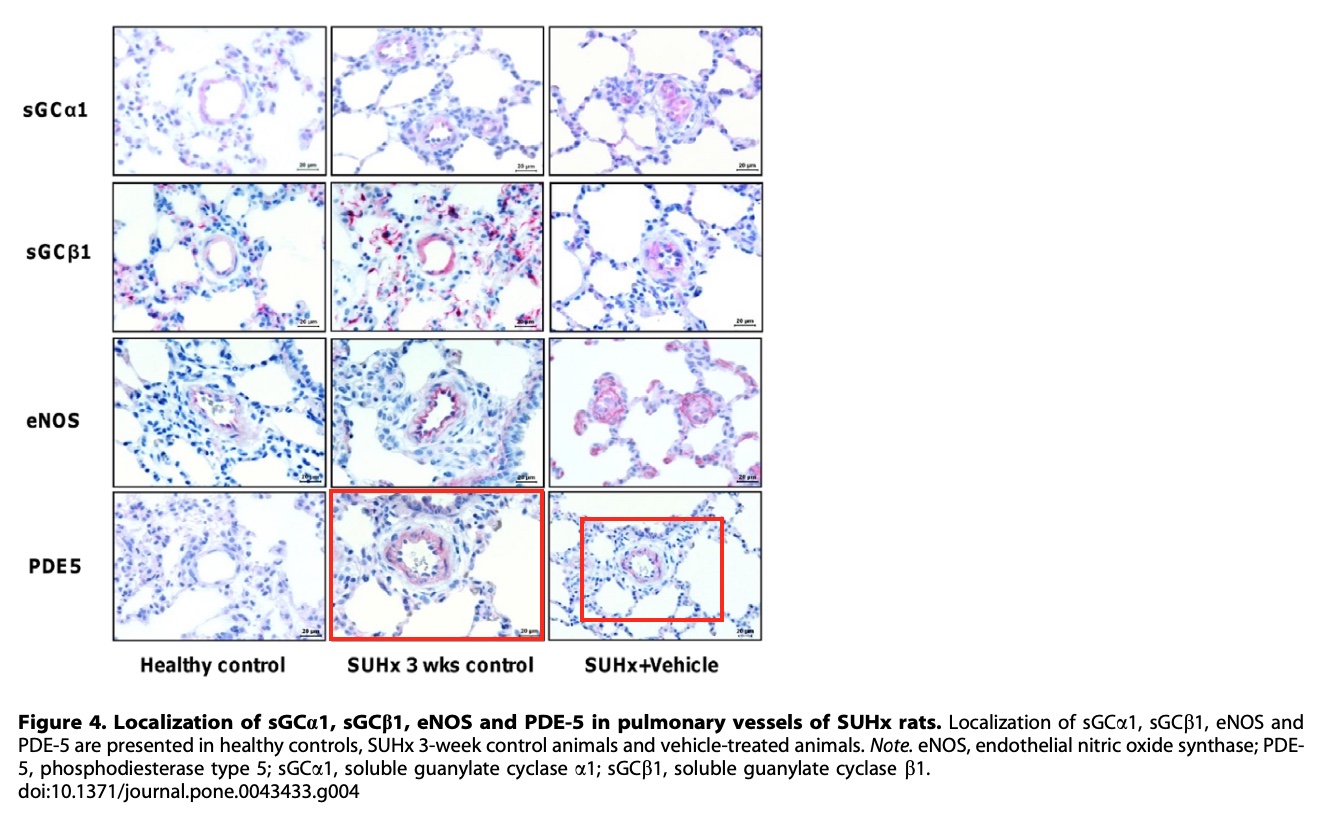
Also here, the corresponding pulmonologist Schermuly, his University of Giessen, and the DFG decided that a Corrigendum would be for sad losers who ignorantly believe that lung tissue and blood vessels are not exactly the same thing:
Rajkumar Savai , Soni S. Pullamsetti , Julia Kolbe , Ewa Bieniek , Robert Voswinckel , Ludger Fink , Axel Scheed , Christin Ritter , Bhola K. Dahal , Axel Vater , Sven Klussmann , Hossein A. Ghofrani , Norbert Weissmann , Walter Klepetko , Gamal A. Banat , Werner Seeger , Friedrich Grimminger , Ralph T. Schermuly Immune and inflammatory cell involvement in the pathology of idiopathic pulmonary arterial hypertension American Journal of Respiratory and Critical Care Medicine (2012) doi: 10.1164/rccm.201202-0335oc
“Images show basically identical field of view but at different magnification level.”

I invited Schermuly to comment on DFG’s decision to whitewash him, but he didn’t reply. Probably busy quality-assuring.
700 euro per article
An Iranian MSc student in Finland admitted to have purchased authorships from a papermill, costs: €700 for first authorship. Hanieh Shirvani (see her personal website here) used to work as research assistant at the University of Oulu and is presently MSc student of nanotechnology at the University of Jyväskylä. As Shirvani told me, she worked in Oulu under the promise of a PhD student employment. She blames her Turkish professor and his Iranian postdocs for her sacking – there was a university meeting where Shirvani was “ultimately expelled” from the university, her “contract was unexpectedly terminated”.
You will be paid US $500-800 for each paper
“Or The author can also put your name to the article to increase your academic popularity, such as adding your name to the second or third author.”
She claims to have been then contacted by “a research group from Iran” who she believes conspired with a “second plan to destroy my reputation“, on offer was “to write an article to improve my resume so I could return to university.” Her utter lack of relevant scientific knowledge or qualifications was no impediment to Shirvani, so she agreed and paid.
The result are two papers which Alexander Magazinov reported to the University of Oulu for investigation. Shirvani used Oulu affiliation on this paper:
Hanieh Shirvani , Hanieh Jafari , Sayyed Sajjad Moravveji , Fatemeh Abbasi Faranghizadeh , Mehrdad Talebi , Jalaledin Ghanavi , Farbod Esfandi , Sajad Najafi , Masomeh Nasiri Moghadam , Poopak Farnia, Seyed Mohsen Aghaei Zarch Non-coding RNA in SARS-CoV-2: Progress toward therapeutic significance International Journal of Biological Macromolecules (2022) doi: 10.1016/j.ijbiomac.2022.09.105

The author Seyed Mohsen Aghaei Zarch is obviously a papermilling fraudster: as PhD student in Iran he already has “at least 33 publications on a broad range of topics” as the investigative report acknowledges. Also Sajad Najafi is also a PhD student in Iran and another papermiller with “at least 69 publications, including 55 publications in PubMed in 2022/2023 on a very broad range of topics“.
The second paper, where Shirvani used University of Jyväskylä affiliation, contains at least 6 retracted references, out of the first 11 citations 10 go to Aghaei Zarch himself, who explained on PubPeer “our discussions and conclusions were supported by a comprehensive array of over 110 research articles.”
Hanieh Shirvani , Jalaledin Ghanavi , Amin Aliabadi , Fatemehsadat Mousavinasab , Mehrdad Talebi , Jamal Majidpoor , Sajad Najafi , Seyyed Mohammad Miryounesi, Seyed Mohsen Aghaei Zarch MiR-211 plays a dual role in cancer development: From tumor suppressor to tumor enhancer Cellular Signalling (2023) doi: 10.1016/j.cellsig.2022.110504
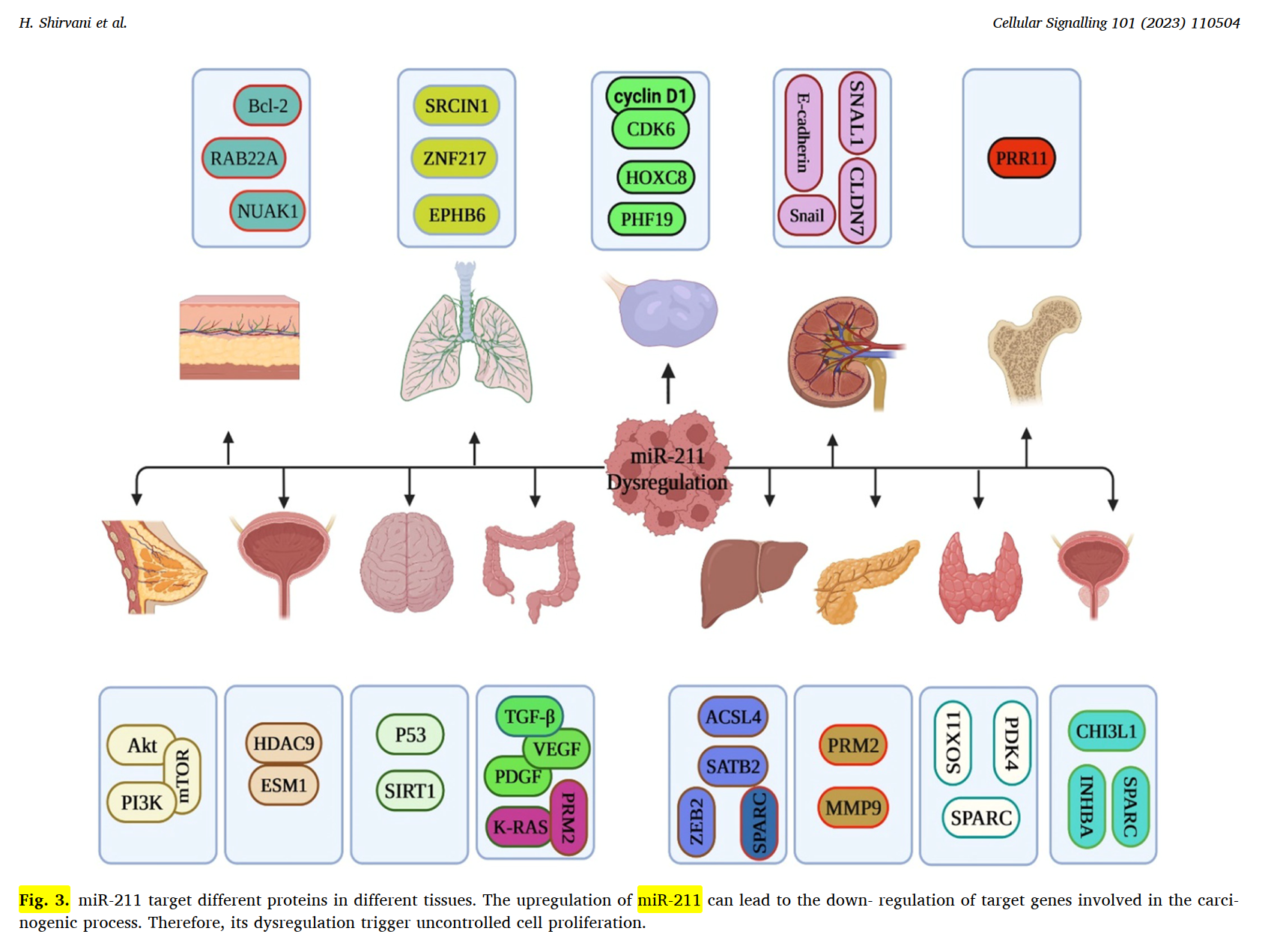
This is the report’s summary (I removed personal email addresses):
From the report:
“In the preliminary investigation (Attachment 4) it is noted that a full investigation is not required. The respondent admitted in her response to the preliminary investigator that a RI violation has taken place as she has bought purchased authorship for both of these scientific publications (Paper A and Paper B) with 700 euro per article, so 1400 euro in total. The respondent has also provided the information to the publishers as part of the cancellation request.
The preliminary investigator also concludes that all the other alleged violations of RI have occurred, but that the respondent is not responsible for i) expanding the biography of a study to artificially increase the number of citations or ii) reporting research results and methods in a careless manner, resulting in misleading claims, as she did not write either manuscript. […]It is essential to note that the RI violation took place after the respondent had terminated her employment with the University of Oulu. As described above both manuscripts were listed by the journals after the employment was ended at the University of Oulu.”
The appointed investigator was Lloyd Ruddock, biochemistry professor at the University of Oulu. Here is his summary report:
From Ruddock’s report:
“During the preliminary investigation the complainant provided additional information (mainly in Chinese) of an alleged “pay to publish” scheme being operated by one of the editors (Prof Ziaoxiong Zeng) at the International Journal of Biological Macromolecules and the Journal of Functional Foods. […]
White the purchase of authorship is a serious Rl violation, the preliminary investigator notes that the respondent-initiated retraction of both publications by contacting the publishers, admitting the paid authorship and providing details of whom the payment was made to. This was done at some personaI risk.
This self-retraction and their clear contrition should be taken into account when considering any possible sanctions.”
Look What the Cat Dragged In
Meet Mohammad Taheri, PhD, a humble PhD student in Jena, Germany, and his equally unremarkable Iranian associate Dr Soudeh Ghafouri-Fard.
And:
“Regarding the provenance concerns of the respondent, the field of expertise from her personal website, the research work she undertook at the University of Oulu and her CV submitted as part of her application the University of Oulu give no indication of any experience in research related to the topic of the paper.
During the preliminary inquiry the respondent admitted that this was a paid authorship, with payment (700 euro) being made to one of the coauthors (Mehrdad Talebi). The respondent has provided information to the journaI on this as part of a retraction request.”
Mehrdad Talebi‘s PubPeer record so far overlaps with that of Najafi and Aghaei Zarch. But he is now established as the owner of an Iranian papermill.
Shirvani wrote to me in an email:
“I will definitely take legal action against this business and this Iranian team. 🙂 I want to make you sure that I will do everything in my power to stop them. I am responsible!“
As reminder, she honestly paid an Iranian fraudster €1400 for authorship on two papers she had no qualificatiosn to understand, but is disappointed to find out those were papermilled.
Hier kommt Herr Sonne
“Go and change the globe to a more positive future instead”
All this is a bit sad regarding the MSc student Shirvani whose career is likely to be over (in Finland at least). Because it seems many Iranian researchers of all career stages buy authorships from Asian papermills, as you see from Shirvani’s emails the practice is not even seen as wrong or unethical. What makes it worse, western academics tend to support this fraud by wilfully mistaking unusually large “international” publication records for signs of talent, skills and intelligence. Some western academic elites even actively participate as co-authors. You can see a similar case, also from Finland in the comments here (part of Mika Sillanpää misconduct scandal).
Participation not advisible
Some love affairs are just not healthy, especially if the object of desire is a parasitic lying scamference fraudster like Ashutosh Tiwari. In such cases, sane adults need to step in to separate the ill-adviced bond. Which the University of Bochum in Germany now did, regarding their coal industry-sponsored professor Thomas Müller.
Müller, an expert on making dirty brown coal green, was so infatuated by Tiwari and his new scam – called International Institute of Water, registered in a hotel in India, and so upset about my disparaging reporting about his valued associate, that he sent lawyers with a cease-and-desist letter demanding €2000 from me in “personal injury compensation”, plus legal fees. Read here:
Thomas Müller’s Own Goal
“There is a justified concrete suspicion that third-party funders would from their side terminate the financial support of our client because of the above mentioned representation of our client. This would lead to significant financial losses.”
Now, I presume Müller must have forgotten to send such a lawyer’s letter to his University of Bochum. Who now decided, and sent me this letter (translated):
“Dear Mr. Schneider,
Based on your report, the Ombuds Committee of the Ruhr University Bochum has dealt with the scientific integrity of the International Institute of Water (IWW). The Ombuds Committee has come to the conclusion that a participation in the IWW is currently not advisable in order to comply with good scientific practice. The Rectorate agreed with this assessment without reservations at its meeting on March 26, 2024.”
Little Thomas will now have to find new friends to play with.
Before the current atmosphere of prosecution
Just when everyone assumed that the hounding and harassment of the Nobel Prize laureate and Stanford professor Thomas Südhof ended with a retraction of his PNAS paper – Elisabeth Bik arrived to the hounding party.
Thomas Südhof and the standards of scientific rigor
Maarten van Kampen’s second attempt at hounding of Nobel papers.
Previously, Maarten van Kampen looked into the numbers in Südhof’s papers, now Elisabeth Bik looked into the images. Predictable result: Südhof is extremely angry.
Erica Seigneur , Thomas C. Südhof Genetic Ablation of All Cerebellins Reveals Synapse Organizer Functions in Multiple Regions Throughout the Brain Journal of Neuroscience (2018) doi: 10.1523/jneurosci.0360-18.2018
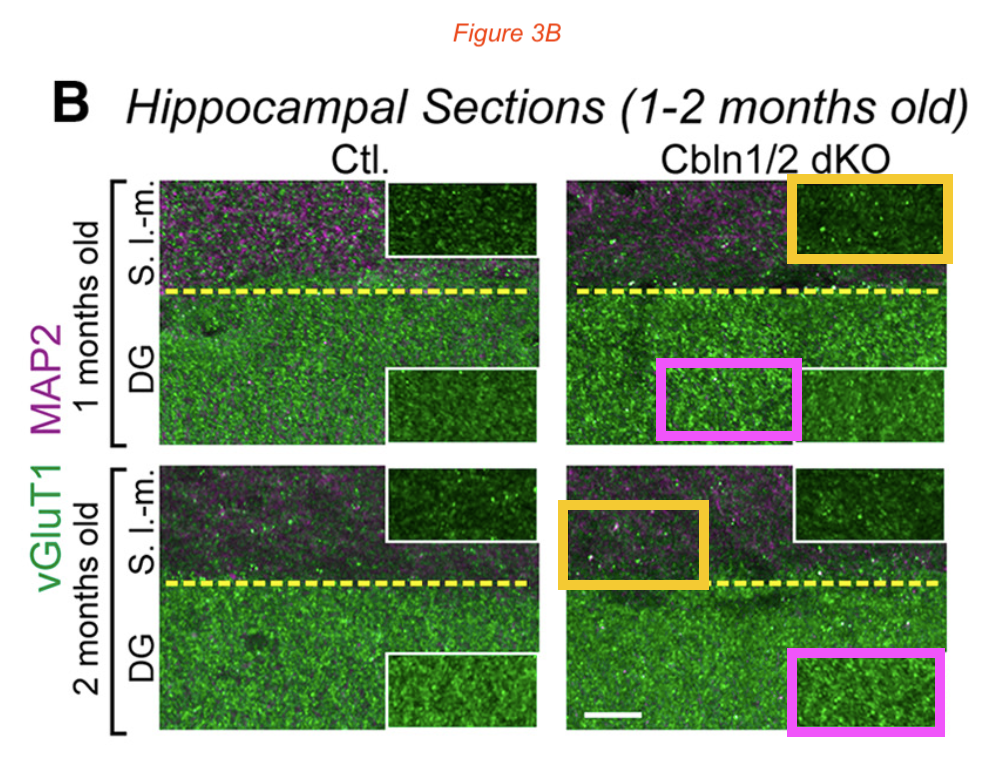
Pink boxes: Part of the 1 months old Cbln1/2 dKO panel has been used as the inset for the 2 months old panel.
Amber boxes: Part of the 2 months old Cbln1/2 dKO panel has been used as the inset for the 1 months old panel.”

Red boxes: In the vGAT MAP2 row, the Ctl and Cbln1/2/4 tKO panels look identical, but the insets are different.”

“Concern about Figure 2:
- Cyan boxes: The PSD95 panels of Cerebellum and Thalamus appear to show the same blot, but in mirror image.
- Blue boxes: The corresponding Actin panels also appear to show the same blot, but in mirror image, and with a change in aspect ratio.
- Red boxes: The vGAT Actin panels of Caudate-Putamen and Thalamus appear to be identical.
- Some Actin panels have been reused within the same column, but those are appropriate duplications, so I did not label them.”
The first author Erica Seigneur admitted to duplicated gels, but didn’t comment on the rest. Südhof himself replied on other PubPeer threads. Here a Cell paper which Südhof had to correct previously to admit that his discovery was not original at all:
Jie Wang , Yi Miao , Rebecca Wicklein , Zijun Sun , Jinzhao Wang , Kevin M. Jude , Ricardo A. Fernandes , Sean A. Merrill , Marius Wernig , K. Christopher Garcia, Thomas C. Südhof RTN4/NoGo-receptor binding to BAI adhesion-GPCRs regulates neuronal development Cell (2021) doi: 10.1016/j.cell.2021.10.016

Red boxes: The HBD-GAIN/RTN4R BAI1 and BAI3 panels appear to show the same photo.”
Südhof reacted on PubPeer with:
“Dr. Bik’s passionate pursuit of our lab using new artificial intelligence tools may have uncovered yet another copy-paste error in a representative figure panel that we will look into and that would obviously have escaped our attention without her artificial intelligence tools.“
Without any “artificial intelligence tools” I can see that Südhof is wrong – this is not a “copy-paste error” because the duplicated image changed its signal intensity during copy-pasting.
The gel bands below are clearly identical, but Südhof disagrees:
Samantha R. Golf, Justin H. Trotter , George Nakahara , Thomas C. Südhof Astrocytic Neuroligins Are Not Required for Synapse Formation or a Normal Astrocyte Cytoarchitecture bioRxiv (2023) doi: 10.1101/2023.04.10.536254

In the last decade, Bik found duplications in many thousands of papers and achieved hundreds or maybe thousands of corrections and retractions. But even Bik met her master now – an angry old German man in California. The Nobelist berated Bik’s amateurism:
“A common mistake in the search for blot duplications is to assume that if blots have similar artifacts and features (as shown here) they must be duplicated. However, if similar samples are run on the same gel apparatuses at the same relative positions in the gel, they will have the same artifacts and features because these are introduced by the gel combs and the gel apparatuses. Similar concerns apply to blotting backgrounds.”
Rest assured Südhof will silently replace this gel between the preprint and the peer reviewed version. Here, it started with irregularly spliced gels and ended with worse findings once Bik had a look:
Jacqueline Burré, Manu Sharma , Thomas C. Südhof Systematic mutagenesis of α-synuclein reveals distinct sequence requirements for physiological and pathological activities Journal of Neuroscience (2012) doi: 10.1523/jneurosci.3545-12.2012
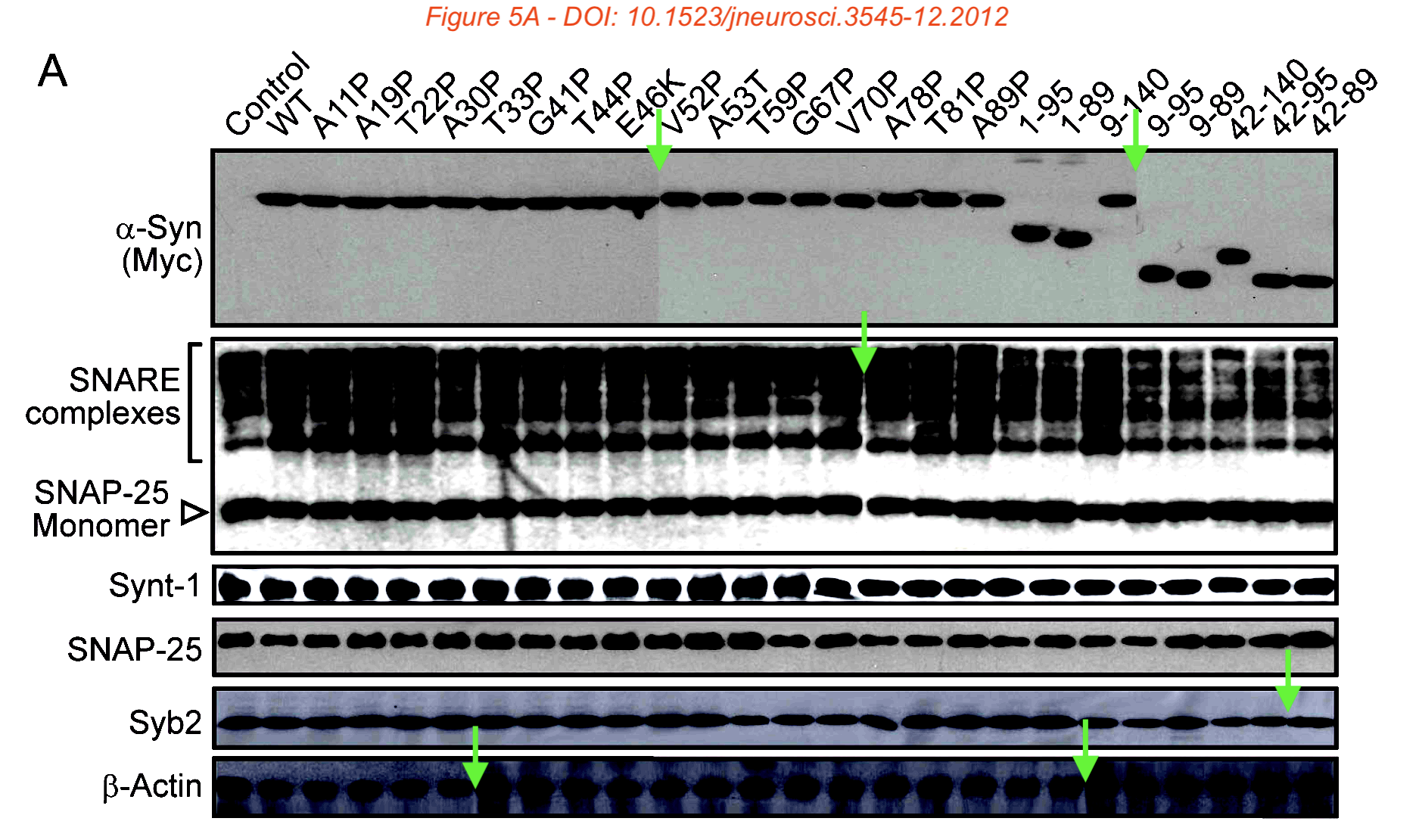

Yellow boxes: The A89P and 9-89 panels appear to overlap, with a 90-degree rotation.
Purple boxes: The 1-95 and 1-89 panels appear to overlap, with a 180-degree rotation.”

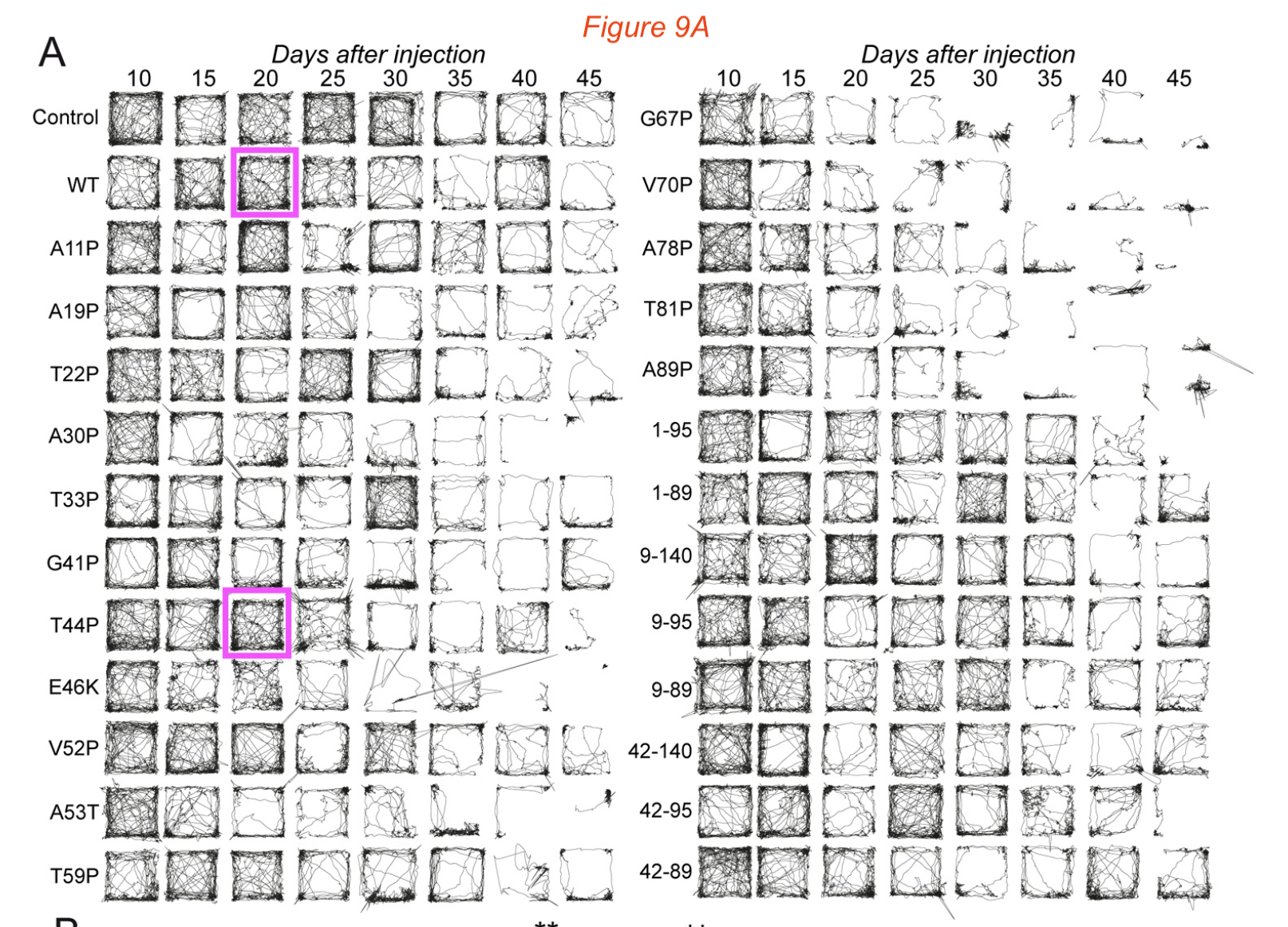
Pink boxes: in the Day 20 column, the WT and T44P panel are the same.
Also, some panels appear to show mice wandering far out of their box (e.g. 42-89 day 25, or E46K day 30). How can this be explained?”
Südhof explained on PubPeer that he is a victim of prosecution. For partially duplicated images he promised a correction, warning: “again this will have no consequences for the scientific content“. On western blots he complained totally beside the point of irregularity of splicing:
“A decade ago, before the current atmosphere of prosecution, it was assumed and accepted that composite blots like the one cited by the accusers would be assembled from multiple individual blots, each of which includes its own control and is clearly recognizable as a separate blot. Nowadays this is considered deception even though there is no attempt to hide it”
Is this, rather recently published in Science, deception or Nobel trolling:
Richard Sando , Xian Jiang , Thomas C. Südhof Latrophilin GPCRs direct synapse specificity by coincident binding of FLRTs and teneurins Science (2019) doi: 10.1126/science.aav7969

The next paper, also in Science, was flagged already in May 2023. Some allegations of duplicated images proved unsupported, others were verified, and new problems found. Still, Südhof decided to play victim.
Jacqueline Burré , Manu Sharma , Theodoros Tsetsenis , Vladimir Buchman , Mark R. Etherton , Thomas C. Südhof Alpha-synuclein promotes SNARE-complex assembly in vivo and in vitro Science (2010) doi: 10.1126/science.1195227

Südhof’s last position was:
“We apologize but feel that the original blots presented above are of sufficient resolution to rule out the allegation by the accusers that the blots were duplicated, and hope the accusers will agree.”
In another journal of Science family, cells were digitally re-arranged for reasons unknown. Worth noting it has the same author Pei-Yi Lin who admitted data manipulation in the retracted PNAS paper Lin et al 2023 (read above):
Pei-Yi Lin , Lulu Y. Chen , Man Jiang , Justin H. Trotter , Erica Seigneur , Thomas C. Südhof Neurexin-2: An inhibitory neurexin that restricts excitatory synapse formation in the hippocampus Science Advances (2023) doi: 10.1126/sciadv.add8856
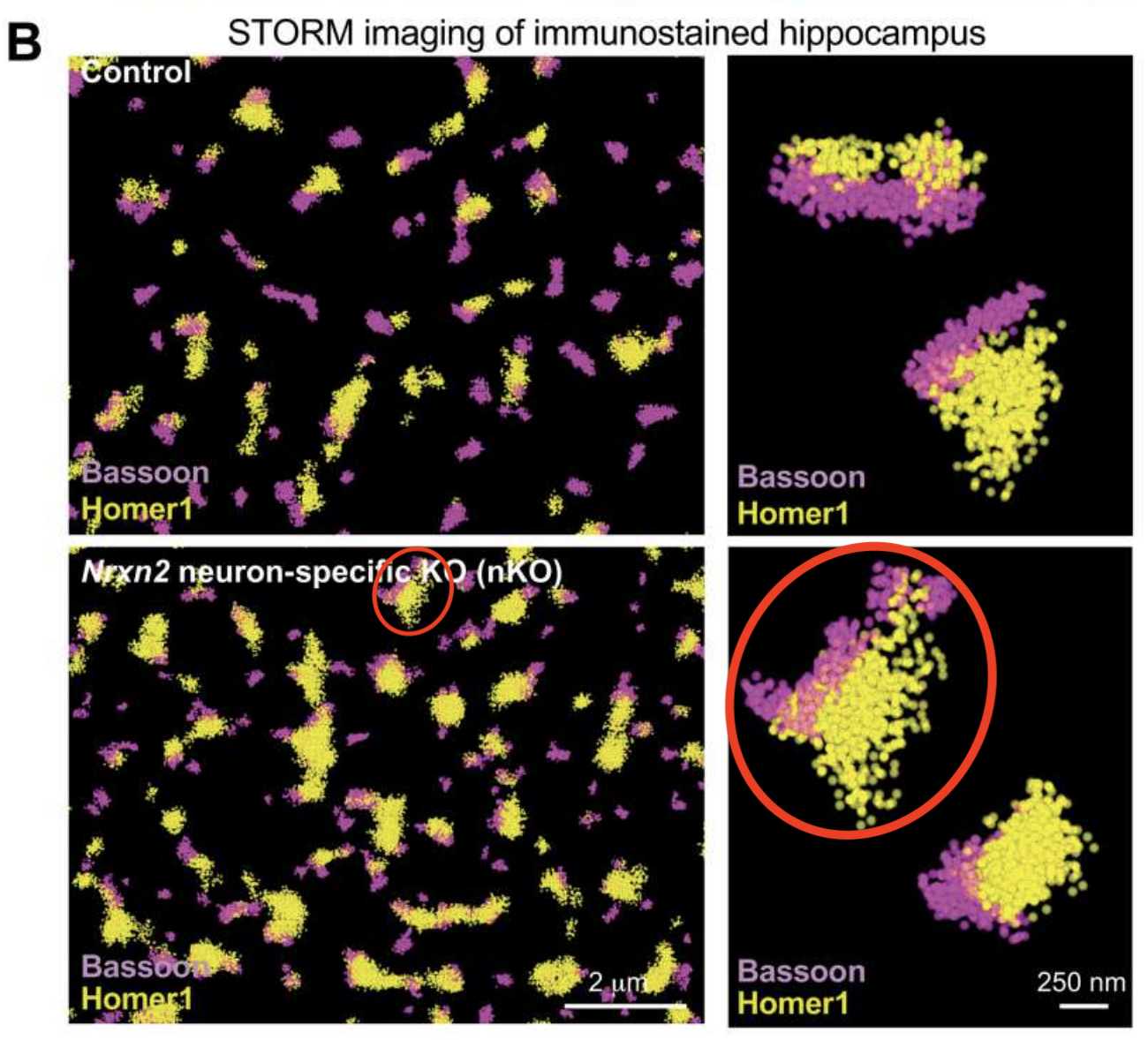
Bik on Figure 4B: “The two enlarged clusters in the top right photo appear to be both missing from the image shown on the left[…]. Only the cluster shown in the red box can be seen in the enlarged image on the right, but its partner in that image is not present in the image on the left. So the right photo contains two different clusters that were not adjacent to each other in the left photo. It seems apparent that the right photo was ‘stitched’ or spliced.”
Südhof was furious about “Dr. Bik’s relentless accusations on PubPeer and ‘X’ (Twitter)“:
“Dr. Bik’s passionate eagerness to find fault with our work leads her to accusations that are simply incorrect. The paper clearly states that the right images are representative enlargements of two synaptic junctions and never stipulates that the two synapse images are adjacent to each other in a lower magnification image or even that they are found in the left images – they are just beautiful examples of synapses that we like. Stitching implies the accusation that we are trying to hide something which we don’t,”
Not true what Südhof says: in his paper, he described the composite image as “Representative” of “direct stochastic optical reconstruction microscopy (dSTORM)“, i.e. as original unedited microscopy data. Whatever their reasons, the authors were indeed trying to hide something.

There are more resumed and newly established PubPeer threads for Südhof. This was already corrected, and will need another correction:
Justin H Trotter, Junjie Hao , Stephan Maxeiner , Theodoros Tsetsenis , Zhihui Liu , Xiaowei Zhuang, Thomas C Südhof Synaptic neurexin-1 assembles into dynamically regulated active zone nanoclusters The Journal of Cell Biology (2019) doi: 10.1083/jcb.201812076
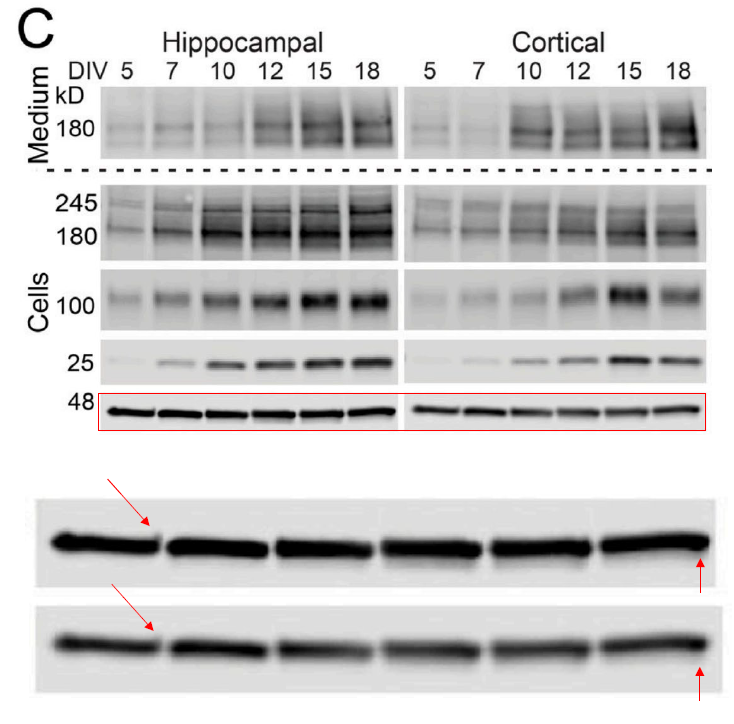
Südhof’s reply on PubPeer: “We are now correcting this switch that has no import on the actual paper and have deposited images of the full-length blots for Figure 7C in a public database so that any concerned person can assess them (https://doi.org/10.25740/vw465gc3869). Naturally, these mistakes will prompt our additional diligence to minimize further recurrences.”
The Correction from 4 September 2023 mentioned “The error applies only to the illustrative blots and not to the quantifications and conclusions.” Then Bik found another duplication, but Südhof closed that case already:

“Figure S1E in the supplemental.
- Cyan boxes: The VGLUT1 and VGAT red and green signals appear to overlap, while the blue signals are different. Only shown in the Merged panels.”
In one thread, the Nobel Prize Laureate explained:
“Dr. Bik & Co are trying to create the impression of a systemic problem when there is only simple human error by many different young scientists assembling figures containing tens and sometimes hundreds of images. The mention of a paper that we retracted because an analysis wasn’t done properly is inappropriate. I think it is time to consider the actual science. The systemic problem is with PubPeer commentators who chase minor human errors but neglect what is truly important, namely the overall science that is not dependent on a single pasted image but on a large number of data.”
Science moves forward with productive and meaningful activities
“Yup we are being hounded.” – Thomas Südhof

Is it a “systemic problem” when “a large number of data” in Südhof’s papers is fabricated? Our angry old man set up a website to rebut the PubPeer allegations, where he complains:
“PubPeer is non-transparent, censors responses, and uses anonymous commentators with continuously changing aliases. Moreover, PubPeer posts are communicated to journals and university administrators to widely disseminate the views of PubPeer without feedback by the accused.”
One funeral at a time
In February 2024, Judith Campisi, professor at the Buck Institute for Research on Aging in California and anti-aging entrepreneur, died aged 75. There were many obituaries, here is one in Nature:
“Judy inspired a generation of scientists by creating an open-minded, creative and cutting-edge atmosphere of scientific discovery.”
Another obituary mentioned:
“As well as a member of the SENS Research Foundation Advisory Board and an adviser at the Lifeboat Foundation, Judy Campisi was co-editor in chief of the Aging Journal with Mikhail Blagosklonny and David Sinclair.”
What a company! SENS founder, the sexual harasser and pimp Aubrey De Grey, probably under drugs miscalculated: “one of my foremost role models in the field, Judy Campisi, died yesterday, not even making it to 70 years old“. Campisi was 75 when she died.

In her life which failed to be extended by her own senolytics, Campisi surrounded herself with finest of men: bullies, fraudsters and sexual harassers, but such is the anti-aging community, what can you do. I previously briefly wrote about Campisi’s struggling senolytics startup Unity Biotechnology, this article is still extant:
Send in the Senolytics!
“The authors declare no competing financial interests.”
Let’s now celebrate Dr Campisi’s research on cancer and ageing.
Marco Demaria, Monique N. O’Leary , Jianhui Chang , Lijian Shao , Su Liu , Fatouma Alimirah , Kristin Koenig , Catherine Le , Natalia Mitin , Allison M. Deal , Shani Alston , Emmeline C. Academia , Sumner Kilmarx , Alexis Valdovinos , Boshi Wang , Alain De Bruin , Brian K. Kennedy , Simon Melov , Daohong Zhou , Norman E. Sharpless , Hyman Muss, Judith Campisi Cellular Senescence Promotes Adverse Effects of Chemotherapy and Cancer Relapse Cancer Discovery (2017) doi: 10.1158/2159-8290.cd-16-0241

Mycosphaerella arachidis: “Figure 1 and Figure 2: […] one of the images of mice is mirrored and labelled as showing a different experiment. […] it seems to be a second bioluminescence image of the same mouse, presumably taken in quick succession.”
The first author Marco Demaria, now associate professor in The Netherlands, explained that “Something must have gone wrong during saving/data storage“. Sholto David previously wrote about Campisi’s collaborator and former Director of National Cancer Institute, Norman Sharpless:
Sharpless Ned, or how half a mouse died
“The President’s goal of ending cancer as we know it today is grounded, in part, in the work of scientific discovery that Ned Sharpless has led at NCI”
Here is another collaboration partner of Campisi’s – a certain Eric WF Lam. In May 2021, he was sacked by the Imperial College London for fraud (read here).
Eric Lam: shady research at Imperial to cure breast cancer
Eric Lam is yet another of the many “Curing Cancer with Photoshop” researchers which PubPeer is full of. This professor of molecular Oncology at Imperial College in London is responsible for several papers with duplicated gel bands, but does it matter? He has 250 more.
Lam’s fraud was uncovered and reported for misconduct by Clare Francis. A spokesperson for Imperial College was quoted by Retraction Watch in May 2021:
“We commissioned a thorough independent investigation following allegations of research misconduct against Dr Eric Lam. We found a clear case of research misconduct, and Dr Lam has been dismissed from Imperial College London. “
Now here is a set of papers by Lam and Campisi, with fake and reused data:
- Boyi Zhang , Da Fu , Qixia Xu , Xianling Cong , Chunyan Wu , Xiaoming Zhong , Yushui Ma , Zhongwei Lv , Fei Chen , Liu Han , Min Qian , Y. Eugene Chin , Eric W. -F. Lam , Paul Chiao , Yu Sun The senescence-associated secretory phenotype is potentiated by feedforward regulatory mechanisms involving Zscan4 and TAK1 Nature Communications (2018) doi: 10.1038/s41467-018-04010-4
- Qixia Xu , Qilai Long , Dexiang Zhu , Da Fu , Boyi Zhang , Liu Han , Min Qian , Jianming Guo , Jianmin Xu , Liu Cao , Y. Eugene Chin , Jean‐Philippe Coppé , Eric W.‐F. Lam , Judith Campisi , Yu Sun Targeting amphiregulin (AREG) derived from senescent stromal cells diminishes cancer resistance and averts programmed cell death 1 ligand (PD‐L1)‐mediated immunosuppression Aging Cell (2019) doi: 10.1111/acel.13027
- Boyi Zhang , Qilai Long , Shanshan Wu , Qixia Xu , Shuling Song , Liu Han , Min Qian , Xiaohui Ren , Hanxin Liu , Jing Jiang , Jianming Guo , Xiaoling Zhang , Xing Chang , Qiang Fu , Eric W-F Lam , Judith Campisi , James L. Kirkland, Yu Sun KDM4 Orchestrates Epigenomic Remodeling of Senescent Cells and Potentiates the Senescence-Associated Secretory Phenotype Nature Aging (2021) doi: 10.1038/s43587-021-00063-1


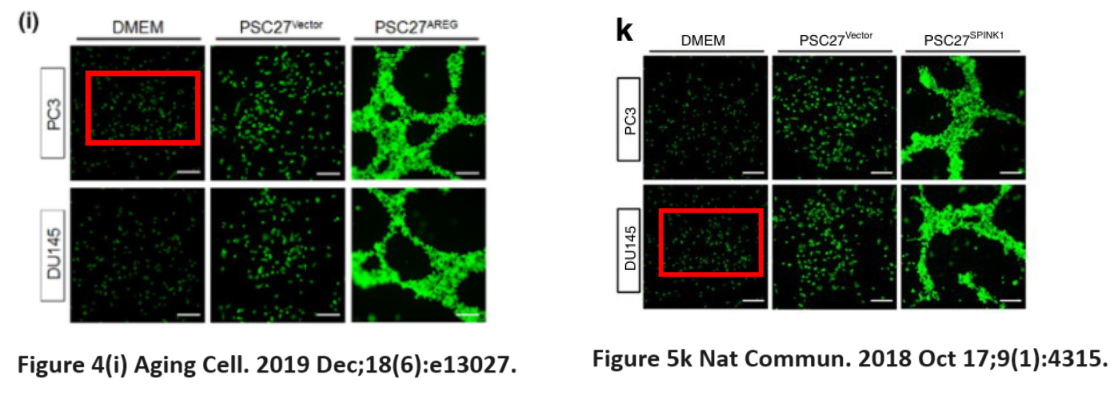

Maybe Lam shouldn’t be even blamed here, but Campisi’s choice of collaborator in China, Yu Sun of Chinese Academy of Sciences in Shanghai:
Hanxin Liu , Qixia Xu , Halidan Wufuer , Zi Li , Rong Sun , Zhirui Jiang , Xuefeng Dou , Qiang Fu , Judith Campisi , Yu Sun Rutin is a potent senomorphic agent to target senescent cells and can improve chemotherapeutic efficacy Aging Cell (2024) doi: 10.1111/acel.13921

To be fair, that was flagged after Campisi’s death. There are some older threads on PubPeer. One paper was corrected (Laberge et al 2015), another one, with Campisi’s former postdoc Oliver Bischof (Bischof et al 2001), was retracted for fraud, Bischof himself was sacked in France.
Academic throne succession: from Anne Dejean to Oliver Bischof
Anne Dejean is a very important cancer researcher in France. To whom shall she bequeath her high-achieving Institut Pasteur lab when she retires? The German shooting star Oliver Bischof is the right man to continue Dejean’s craft.
Max Planck was right that science advances one funeral at a time. It looks like Campisi’s papers need a post-mortem analysis.
Scholarly Publishing
Dr. Shaker Qaidi invites you
On 22 February 2024, I received an unexpected email from the journal PLOS One. Subject: “Dr. Shaker Qaidi invites you to review PLOS ONE manuscript [PONE-D-24-03435] – [EMID:868020b96c3a1fc0]“
“Dear Dr. Schneider,
I am inviting you to peer review the following manuscript for PLOS ONE. In view of your expertise, I would greatly value your input on this manuscript’s suitability for publication. […]
With kind regards,
Dr. Shaker Qaidi
Academic Editor”
The manuscript was by a lab at Ohio State University and titled “Nitrile Glove Composition and Performance – Substandard Properties and Inaccurate Packaging Information“. Now, I left science almost 10 years ago and haven’t reviewed anything since. And my only expertise in nitrile gloves is to have actually worn them. I pointed out the improper peer review invitation to PLOS One, and received 3 days later this reply:
“Dear Dr. Schneider,
Thank you for considering the invitation to review the manuscript referenced above. In an effort to provide the authors with a timely decision, we are working to progress this manuscript to the next stage of the editorial process. As this is the case, your comments will no longer be required. “
A month later, on 30 March 2024, I received another email from PLOS One, subject: “Dr. Shaker Qaidi invites you to review PLOS ONE manuscript [PONE-D-24-03435] – [EMID:ca623f4641a4df34]“. Yes, it was exactly that same manuscript from Ohio about nitrile glove packaging. But this time I decided to look up who this clown editor Shaker Qaidi is.
A papermilling fraudster from University of Duhok in Iraq with a PubPeer record and 3 retractions. One of them:
Jawad Ahmad, Fahid Aslam , Rebeca Martinez-Garcia, Jesús De-Prado-Gil, Shaker M. A. Qaidi , Ameni Brahmia Effects of waste glass and waste marble on mechanical and durability performance of concrete Scientific Reports (2021) doi: 10.1038/s41598-021-00994-0

The Retraction from 1 August 2023 mentioned:
“After publication concerns were raised that the XRD spectra in Figure 8 are identical and that the data points in Figure 16 and Figure 18 are the same although they report the results of different experiments. The authors are unable to provide the original data for examination. In addition, an investigation by the Editors has shown inappropriate changes in authorship during the review process.”
Now, Qaidi’s colleagues, the fraudster Jawad Ahmad plus the Spanish papermilling duo at University of Leon, Rebeca Martínez-García and Jesús De-Prado-Gil, were mentioned in the following article, seen papermilling together with two rascist orks named Roman Fediuk and Nikolai Vatin:
Russkiy Mir at Elsevier and MDPI
Alexander Magazinov presents you two russian professors whom Elsevier and MDPI consider respectable: a Lt Colonel of putin’s mass-murdering army, and a machine-gun totting rascist. Both buy from papermills.
Below, Qaidi papermilling again with his Spanish buddies. Not retracted because MDPI:
Ahmed M. Maglad, Osama Zaid, Mohamed M. Arbili, Guilherme Ascensão, Adrian A. Șerbănoiu, Cătălina M. Grădinaru, Rebeca M. García, Shaker M. A. Qaidi, Fadi Althoey, Jesús De Prado-Gil A Study on the Properties of Geopolymer Concrete Modified with Nano Graphene Oxide Buildings (2022) doi: 10.3390/buildings12081066
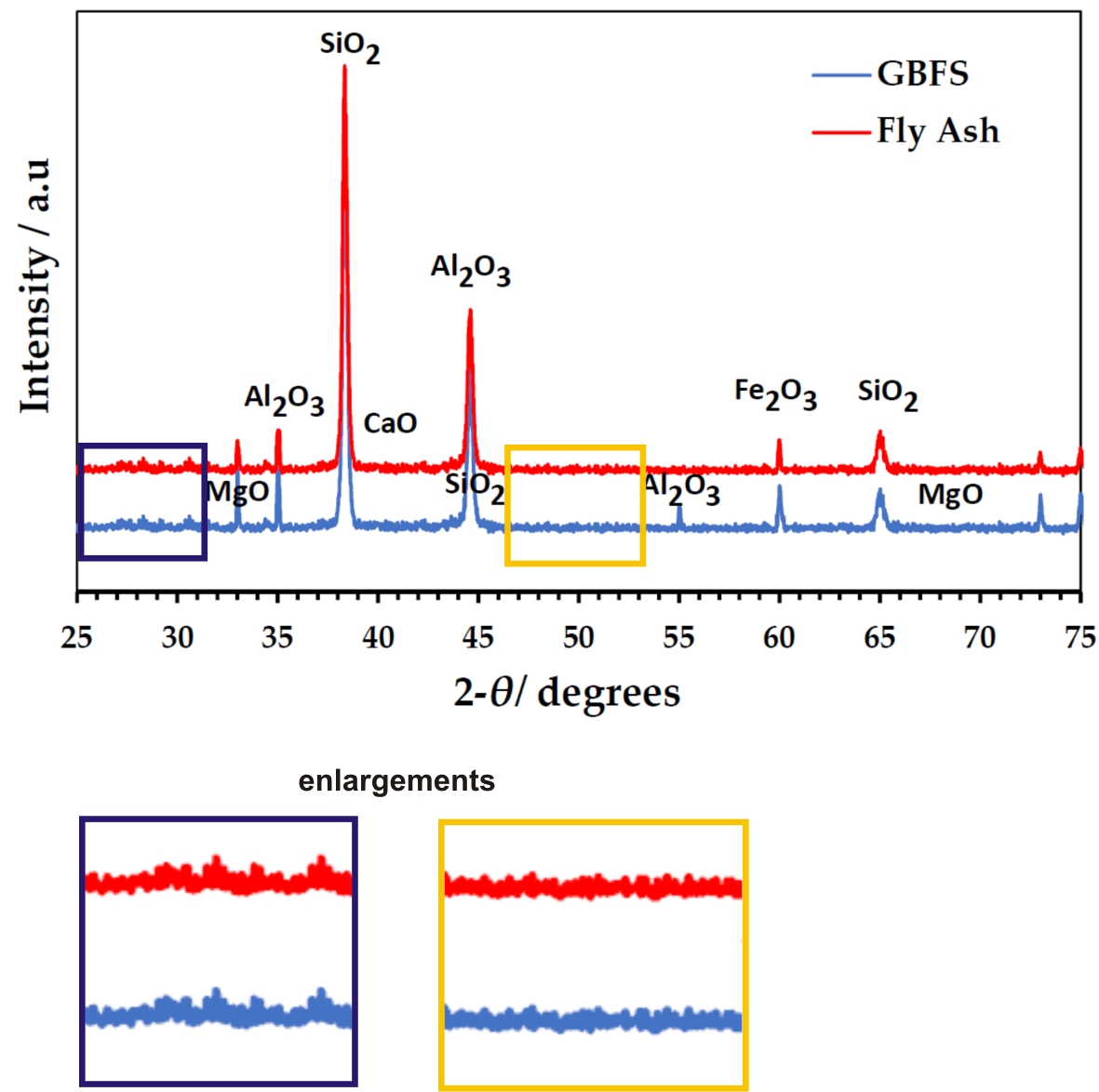
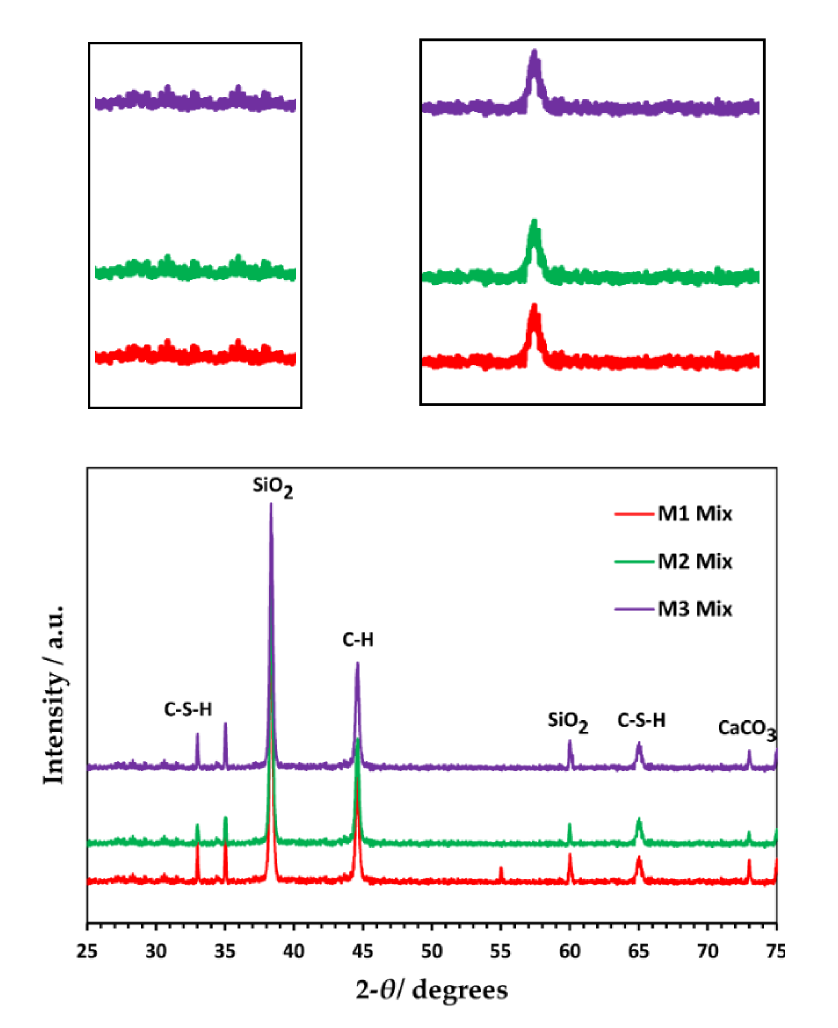
Two more retractions for Qaidi at an Elsevier journal:
- Shaker M.A. Qaidi , Bassam A. Tayeh , Hemn Unis Ahmed , Wael Emad A review of the sustainable utilisation of red mud and fly ash for the production of geopolymer composites Construction and Building Materials (2022) doi: 10.1016/j.conbuildmat.2022.128892
- Shaker M.A. Qaidi , Bassam A. Tayeh , Haytham F. Isleem , Afonso R.G. De Azevedo , Hemn Unis Ahmed , Wael Emad Sustainable utilization of red mud waste (bauxite residue) and slag for the production of geopolymer composites: A review Case Studies in Construction Materials (2022) doi: 10.1016/j.cscm.2022.e00994
They received the same retraction note, mentioning:
“Upon post-publication investigation, it was found that this paper and another published in Case Studies of Construction Materials […] contain mostly the same data. The papers contain 6 common tables and 15 common figures. The text in each paper appears to have been edited to avoid plagiarism checking software. Both papers were initially submitted on the same day.”
Retraction 30 September 2023.
The Vickers Curse: secret revealed!
How did an editorial about insect pheromone communication get to receive 1200 irrelevant citations, almost all from papermills? Alexander Magazinov reveals The Secret of The Vickers Curse!
And of course Qaidi and his papermill buddy Jawad Ahmad fell prey to The Vickers Curse (read the article above):
Xiang He, Zuhua Yuhua , Shaker Qaidi , Haytham F. Isleem , Osama Zaid , Fadi Althoey , Jawad Ahmad Mine tailings-based geopolymers: A comprehensive review Ceramics International (2022) doi: 10.1016/j.ceramint.2022.05.345


I asked PLOS One why they think Qaidi is a good choice of editor. They replied with exactly same message: “Thank you for considering the invitation to review the manuscript […] your comments will no longer be required“.
Retraction Watchdogging
Authorship of the paper cannot be relied upon
Paolo Gardoni, director of the NSF-funded centre for Multi-hazard Approach to Engineering at the University of Illinois Urbana-Champaign in USA (I wrote about Gardoni before in Friday Shorts), and his Polish associate Grzegorz Królczyk, Vice Rector for Research and Development of Opole University of Technology, suffered two retractions due to their excessive papermilling.
The retractions took place in Elsevier’s Journal of Energy Storage, they were part of 100%-papermill special issue by Masoud Afrand, Nader Karimi, Mohammad Arjmand and Cong Qi:
Maybe stop accepting submissions, Herr Prof Dr Sauer?
Who needs science if you can have a 75 paper strong special edition by Afrand and Karimi? A guest post by Alexander Magazinov.
This paper was a citation vehicle to fellow papermillers including the Special issue’s editor Nader Karimi:
Bo Wang , Fangyuan Gao , Munish Kumar Gupta , Grzegorz Królczyk , Paolo Gardoni , Zhixiong Li Risk analysis of a flywheel battery gearbox based on optimized stochastic resonance model Journal of Energy Storage (2022) doi: 10.1016/j.est.2022.104926
This is how Gardoni’s and Krolczyk’s papermilling associate Zhixiong Li replied on PubPeer:
“Dear Prof. Alexander Magazinov, Thank you again for your kind comment. It is very kind of you to point out this. Because these mentioned authors are very active in this research field, we have cited some of their publications. Now we know this and we are sorry for this inconvenience to you. We will pay all our attentions to avoid this in the future. We are grateful of you to let us know this problem. Please kindly forgive us this time.
Thank you again.“
An Expression of Concern was issued in December 2023, and now finally the retraction arrived:
“In investigating concerns brought up regarding the article, the editor reached out to the authors for an explanation.
The authors failed to provide a satisfactory explanation to the above points. Post-publication, the Editor-in-Chief discovered that the email addresses used by the authors during the submission process were associated with multiple researcher accounts. The Editor has determined that the authorship of the paper cannot be relied upon.
Furthermore, the acceptance of this article was partly based upon the positive advice of reviewer reports from reviewers who were closely linked to the Guest Editor, Masoud Afrand.
The Editor also noticed a significant increase of citations of papers authored by one of the Guest Editors between the original submission and the revised version. In summary, 0 papers by Nader Karimi were cited in the original version of the paper. This increased to 6 papers in the revised version.
The Editor has determined that the paper should be retracted.”
Second retraction, same Special Issue, same team of papermilling crooks, and another citation vehicle to the editors Karimi and Afrand, plus several other papermilling fraudsters:
Xinrui Qi , Jianmei Wang , Grzegorz Królczyk, Paolo Gardoni , Zhixiong Li Sustainability analysis of a hybrid renewable power system with battery storage for islands application Journal of Energy Storage (2022) doi: 10.1016/j.est.2022.104682
Even more stupid comments by Zhixiong Li on PubPeer, quoted in Friday Shorts, and an Expression of Concern in December 2023. The retraction notice was also almost identical:
“Post-publication, the Editor-in-Chief discovered that the email addresses used by the authors during the submission process were associated with multiple researcher accounts. The Editor has determined that the authorship of the paper cannot be relied upon.
Furthermore, the acceptance of this article was based upon the positive advice of reviewer reports from reviewers who were closely linked to the Guest Editor, Masoud Afrand.
The Editor also noticed a significant increase of citations of papers authored by two of the Guest Editors between the original submission and the revised version. In summary, 0 papers by Nader Karimi were cited in the original version of the paper. This increased to 6 papers in the revised version. Likewise, 0 papers by Masoud Afrand were cited in the original version of the paper. This also increased to 6 papers in the revised version.”
Zhixiong Li received a similarly-worded third retraction in the same special issue now, without Gradoni but with a fellow papermill fraudster Iskander Tlili (it is possible that Tlili is actually the papermill). There is also a fourth recent retraction for ZX Li, again at the same special issue edited by Afrand, due to “suspicious changes in authorship between the original submission and the revised version of this paper“.
Magazinov reported Gardoni to his university for papermilling in February 2023, as I wrote in Friday Shorts. Christopher Lehmann, Research Integrity Officer of the University of Illinois Urbana-Champaign, announced an investigation and promised to Magazinov to “keep you informed through the University’s evaluation“. Over a year has passed with no news. Magazinov wrote to Lehmann again – no reply.
Gardoni is in principle unsackable. He is “Alfredo H. Ang Family Endowed Professor”, meaning his chair is sponsored by his academic “grandfather”. But maybe these retractions will prove a bit embarrassing.
Now, the Polish Vice-Rector for Research Grzegorz Królczyk will be obviously investigating himself. This Papermilling Rabbit with a hagiographic Wikipedia page was seen papermilling not just with ZX Li and Gardoni, but also with another great fraudster: Changhe Li!
Not just that: Krolczyk’s own private website shows a carefully curated publication list (which unfortunately stops in 2021) – it lists many papers by Krolczyk with ZX Li and other papermilling crooks like Seeram Ramakrishna. It also lists other papers with Munish Kumar Gupta, another associate of Changhe Li and also co-author of one of the retracted papers above. Gupta also recently retracted a paper in another Elsevier journal because “similar images have been used in various articles in multiple journals claiming varying conditions“.
Krolczyk did not reply to my emails, but he explained to another person that he has no information about these retracted papers and that he also doesn’t know the coauthors on them. Which is of course a shameless lie.
Funny, not only Krolczyk proudly lists all his other papers with ZX Li and MK Gupta on his CV, he even recruited them to his university. Gupta was brought in in 2020, with the rector Marcin Lorenc celebrating this “foreign scientist with such achievements” as “primarily a value for our students“, ZX Li was apparently smuggled in through the backdoor at the same time.
Two years later, in November 2023, Krolczyk asked these two “people with such high scientific achievements” to remain at his university (permanently, maybe?):

Indeed, ZX Li declares to be affiliated with the Opole University of Technology, while Gupta is even officially listed as professor there. In December 2023, the university celebrated Krolczyk and Gupta as “Best Rising Stars of Science in the World 2023”. If you still had doubts where this Polish university stands on papermilling:

An explanation of these concerns
Two more retractions for the Italian ex-rector of University of Messina, Salvatore Cuzzocrea.
Cuzzocrea’s Magnificent Fall
“These unscrupulous charlatans in Messina should be fired on the spot tomorrow morning, forced to return twenty years of undeserved wages and sent to work the land” – Aneurus Inconstans
Rosanna Di Paola, Roberto Di Marco, Emanuela Mazzon, Tiziana Genovese, Klaus Bendtzen, Battesimo Macrì, Ferdinando Nicoletti, Salvatore Cuzzocrea Prevention of carrageenan-induced pleurisy in mice by anti-CD30 ligand monoclonal antibody Clinical Immunology (2004) doi: 10.1016/j.clim.2004.05.008


The Retraction from 29 March 2024 stated:
“This article is being retracted at the request of the Editors-in-Chief.
The journal was notified of two image duplication issues within the published article, namely in Figs. 7C and 7D, as well as in Figs. 8A and 8D (PubPeer link: https://pubpeer.com/publications/8999AB0BA97D8A4078F51018863304). The journal asked the authors to provide an explanation of these concerns, however the corresponding author’s explanation did not satisfactorily address the editors’ concerns. The Editors-in-Chief assessed the case and decided to retract the article as they were no longer confident that the experimental data supported the conclusions.”
The second retraction, in the same Elsevier journal, was with Cuzzo’s former mentor at Queen Mary University of London, Christoph Thiemermann.
Queen Mary and John Vane’s Cowboys
Welcome to the the William Harvey Research Institute in London. Meet two proteges of its founder, the late Nobelist Sir John Vane: Chris Thiemermann and Mauro Perretti. Then meet their own rotten mentees, especially Salvatore Cuzzocrea and Jesmond Dalli.
It is also not his first retraction, and not all of Thiemermann’s fake science was co-authored by Cuzzo.
Salvatore Cuzzocrea, Emanuela Mazzon, Rosanna Di Paola, Carmelo Muià , Concetta Crisafulli , Laura Dugo, Marika Collin , Domenico Britti, Achille P. Caputi, Christoph Thiemermann Glycogen synthase kinase-3β inhibition attenuates the degree of arthritis caused by type II collagen in the mouse Clinical Immunology (2006) doi: 10.1016/j.clim.2006.03.005

Aneurus inconstans: “Figure 3: images (A) and (A1) are supposed to describe sham-control mice, whilst images (C) and (C1) are supposed to describe the reduction of bone erosion in TDZD-8-treated mice. Images (A) and (C) overlap (red boxes), meaning they come from the same animal and cannot represent what indicated. Images (A1) and (C1) also overlap (green boxes), meaning they come from the same animal and cannot represent what indicated.”
The Retraction from 29 March 2024 mentions additional fraud findings:
“The journal was notified of two image duplication issues within the published article, namely in Figs. 3 A and 3C, as well as Figures 3A1 and 3C1 (PubPeer link: https://pubpeer.com/publications/56FEC52B7FD7617B14D7E13D2AD492). An internal investigation found a further potential image duplication issue concerning Figs. 5B, 5D and 5F. The journal asked the authors to provide an explanation of these concerns, however the corresponding author’s explanation did not satisfactorily address the editors’ concerns.”
I thank all my donors for supporting my journalism. You can be one of them!
Make a one-time donation:
I thank all my donors for supporting my journalism. You can be one of them!
Make a monthly donation:
Choose an amount
Or enter a custom amount
Your contribution is appreciated.
Your contribution is appreciated.
DonateDonate monthly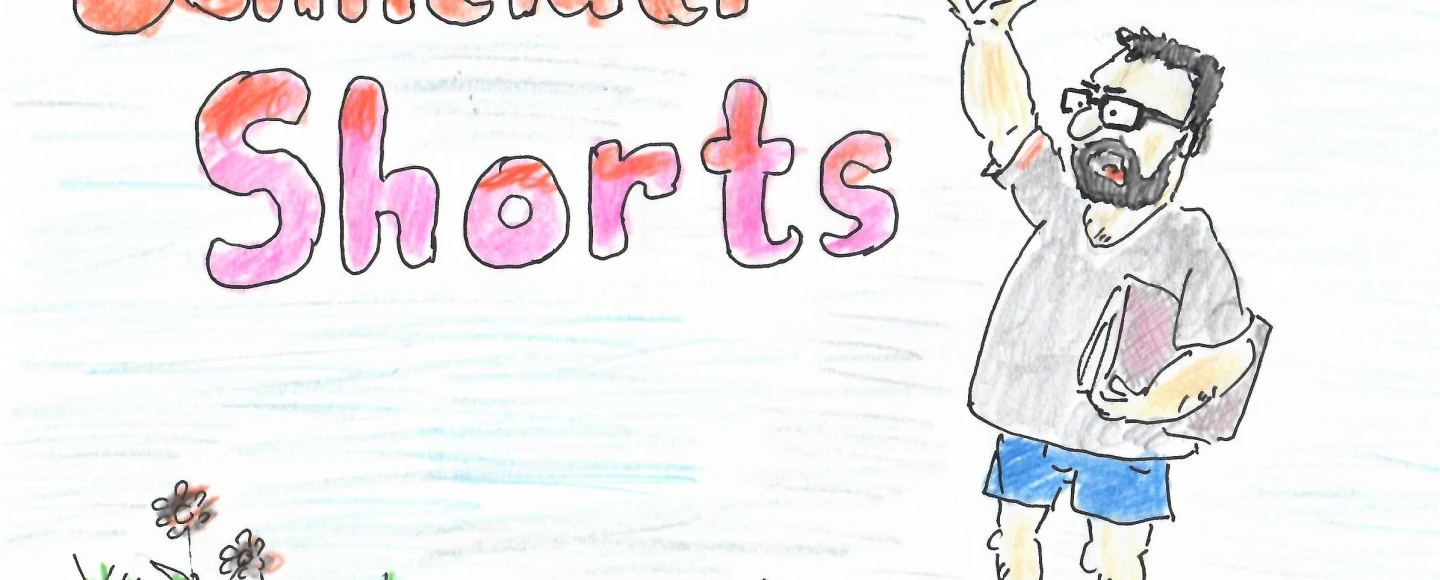













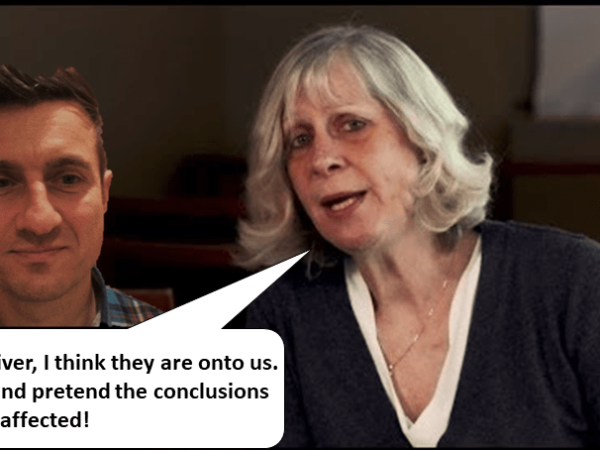


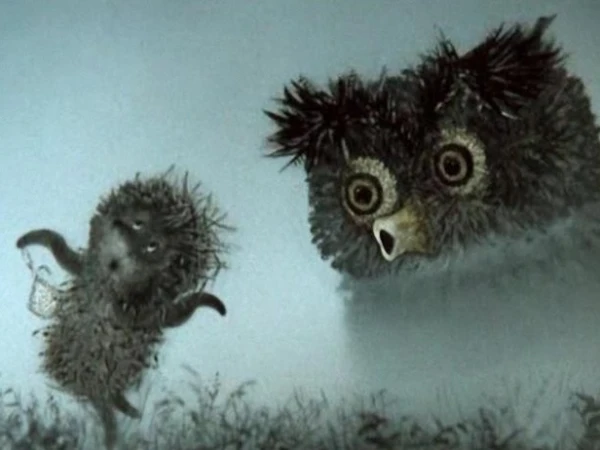

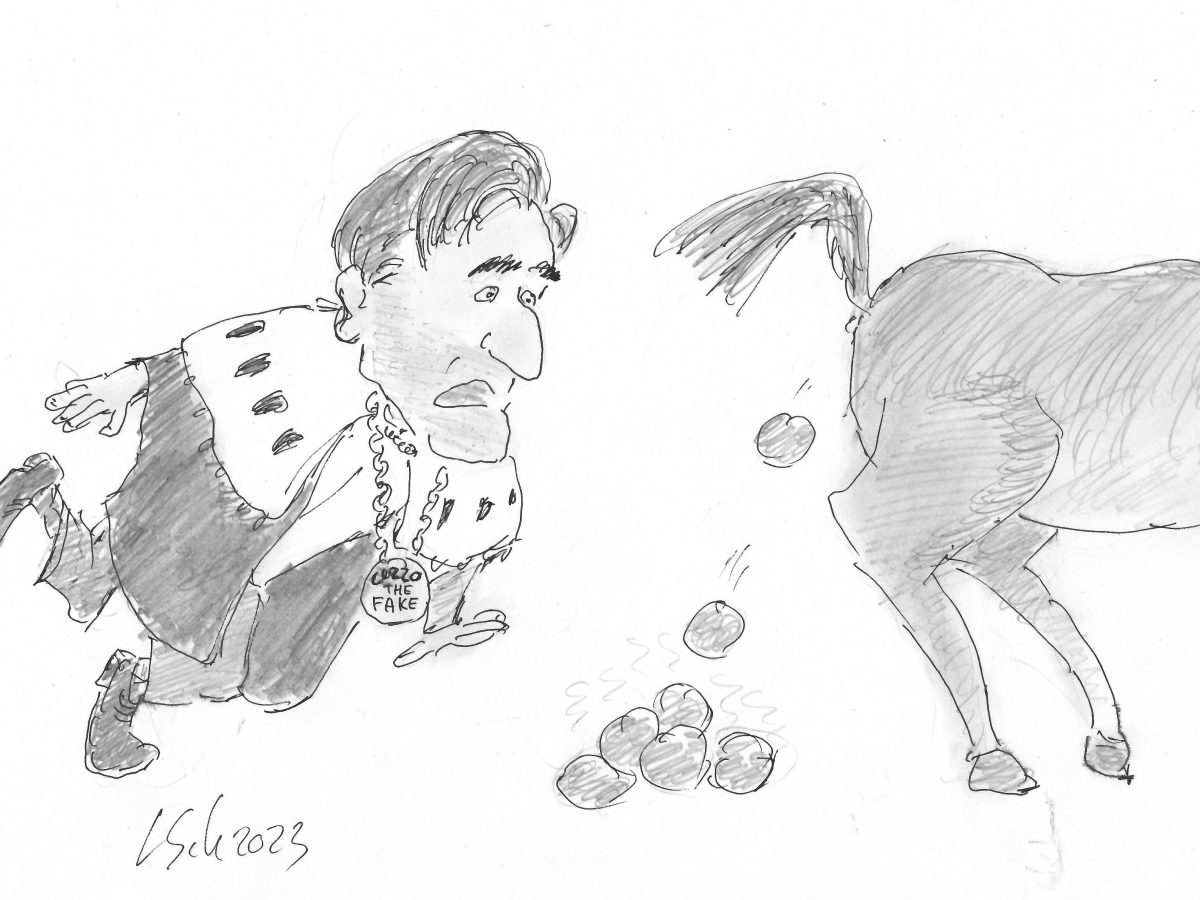


Talebi? Lol. He is the lowest possible intermediary, a nobody butthead from the shithole university of nowhere.
As in, you know, drug policing: if you arrest someone purchasing drugs from someone else, be sure both are fellow lowlife abusers, the second one possibly slightly more connected. In both cases (drugs and papermilling) it is the police’s job to pull out the entire chain.
—
Considering Shirvani: if she is honest (quite likely), then she is just OUTLANDISHLY INCOMPETENT, the rest is a consequence. This is not a fault, rather a feature, and a correctable one, in which case she deserves a chance.
But on the other hand, the vilest actors also look exactly like this. I am unable to tell which is which, so can only advise caution.
LikeLike
“the vilest actors also look exactly like this. I am unable to tell which is which, so can only advise caution.”
Absolutely agree! She should definitely be suspected. But the good part of it is that because she is probably at a loss herself, she can expose everyone who has put her at a loss. Even if I found the Iran Telegram channels on papermill organizations, I couldn’t follow them efficiently. I’m sure she can follow them efficiently and expose those responsible. It is a fact that there are people in Iran who do this work as “service providers” and provide hundreds of citations and articles every year to Iranian academics around the world. These people do this business for money. In return, Iranian academics around the world receive high-budget projects from their host countries, have better chances of academic promotion than their colleagues, and when they do get promoted, they favor Iranian researchers and use the recruitment process to their advantage.
It is very difficult to trace the money in such cases, but the links can easily be found through people who have been involved in these organizations and later regretted or were harmed.
LikeLike
“During the preliminary investigation the complainant provided additional information (mainly in Chinese) of an alleged “pay to publish” scheme being operated by one of the editors (Prof Ziaoxiong Zeng) at the International Journal of Biological Macromolecules and the Journal of Functional Foods. […]
The name of Zeng should be Xiaoxiong Zeng.
Xiaoxiong Zeng
Nanjing Agricultural University College of Food Science and Technology, Nanjing, China
https://www.sciencedirect.com/journal/international-journal-of-biological-macromolecules/about/editorial-board
LikeLike
A brave question: Who’s funeral would advance science the furthest? 😂
LikeLike
Biomedical: Ron DePinho and C Ronald Kahn.
LikeLike
I nominate Anil Sood. Thanks to him, cancer research lost on false non-coding RNA crud, and a moon-shoter to boot.
LikeLiked by 1 person
Sudhof’s misery is so amusing…he should be more pushed to release the raw data for his questionable papers. The fact that the only time he published the raw data, his paper ended up being retracted should be more highlighted…
LikeLike
Write him an email :-). Tom doesn’t talk to me
LikeLike
Prof Südhof must have figured out I am Jewish:
“…we are deeply disturbed by attempts to call into question the integrity especially of young scientists who forgot to press a button hard enough and are now being pilloried for this mistake by commentators who may be doing this for financial gain.”
https://pubpeer.com/publications/D8EAA6F915EE4008B654738F66ABE6
Seriously though, his “young scientists” commit fraud to get cushy faculty jobs which is totally not a financial gain.
What a horrible nasty person Tom Südhof is. An average Nobelist.
LikeLike
I wonder what Sudhof’s mechanism for financially profiting from criticism of him is? Those silly germans! So serious yet paranoid!
LikeLiked by 1 person
You don’t understand. There is a huge secret cabal of Masonic Lizard People led by Soros, Rotschild, Gates and Clinton who conspired to pay us huge money for no other purpose but to discredit Nobel Tom. Because he is the centre of the world.
LikeLiked by 1 person
I agree. Sudhof is such a nasty person. The financial gain has been for him over the past years and years of sucking tax payers money and putting in it to fraud papers….Sudhof is so miserable even playing gender card using women to play victim.. but the question is what a toxic lab environment he created for his “young scientists” pushing them toward becoming fraudulent scientists?!?!
https://www.thetransmitter.org/publishing/nobel-prize-winner-acknowledges-errors-in-three-more-papers/?utm_source=twitter&utm_medium=org-social&utm_campaign=20240405-nobel-prize
“For the young people in my lab, especially the female scientists, this has been devastating as you can see from their responses,” he wrote, saying the identified mistakes “are completely irrelevant to the science but they feel personally attacked and some are simply quitting.” In response to a follow-up email requesting evidence of this claim, he wrote, “Regrettably I cannot do that for privacy reasons.”
LikeLike
I always knew the real feminism champion is not Elisabeth Bik, but an old male German millionaire.
You won’t believe how ironic Südhof’s pretend -feminism is from what people who met his first wife told.me.
LikeLike
I don’t know if it applies to Dr. Sudhof (it likely does), but Nobel laureates can be offered many tens of thousands of dollars for just one invited talk.
LikeLike
https://www.sanofi.com/en/our-company/governance/board-of-directors/thomas-sudhof
https://www.biospace.com/article/releases/neurocentria-announces-dr-thomas-suedhof-to-join-the-scientific-advisory-board/
https://www.limes-schlosskliniken.de/en/the-clinic/medical-advisory-board/
https://neurocure.de/about-us/beirat.html
https://www.cataliocapital.com/team/thomas-sudhof
https://www.cytodel.com/board-of-directors
https://danaher.com/thomas-sudhof-md
Tom.is even on the UN Secretary General’s Scientific Advisory Board :
https://www.un.org/scientific-advisory-board/en
And of course on the Anti-aging scam by Sinclair and Guarente
https://www.elysiumhealth.com/pages/advisory-board
And what surprise (not): our Ethical Tom is in bed with Rascists.
https://www.ibch.ru/en/about/advisory_board/908
LikeLike
So True and it does apply to Sudhof too. He has definitely built a fortune on the fake science he’s been doing for decades.
LikeLike
Is it just me or the picture in the Gardoni story (his tweeted picture of three “great” generations) is photoshop-ped?
LikeLiked by 1 person
You’re right, that photo is photoshopped.
LikeLike
But it doesn’t affect the conclusions
LikeLike
“However I am surprised that before sending their report to me and giving me a chance to defend myself, the University of Oulu sent it to Alexander Magazinov in Moscow. Consequently, this report was published online before I even received it.“
A scandal if true. But I have doubts.
LikeLike
Email from Maria Zalm, Senior Editor, Team Manager Publication Ethics, PLOS, form 26 April 2024:
“Dear Leonid,
PLOS has now completed their review of the editorial activities by Shaker Qaidi and concluded that their conduct was not in line with PLOS’ expectations of members of the PLOS ONE editorial board. As a result, their role as member of the editorial board has now been terminated.
Thank you again for raising these concerns with PLOS. If you have any further questions or comments about this case, please respond to this email directly. If you have any questions or comments regarding other non-related publication ethics concerns involving PLOS, please email us at pub-ethics@plos.org. “
LikeLike